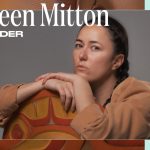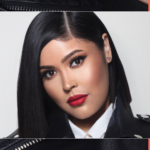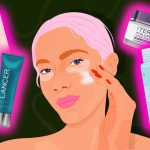Joleen Mitton
Founder
-
Dream Job

She’s a model mentor.
When Joleen Mitton, a Cree citizen of the Sawridge First Nation, was 15, she experienced what a lot of us dreamed of as teens—a modeling scout picked her out of a crowd at a town fair. (Really.) But after years of living the glitz-and-glam life, she co-founded the all-Indigenous agency Supernaturals to connect her roots to the runway. (She’s also the founder of one of the first-ever Indigenous fashion weeks in Vancouver.)
We called the 38-year-old to ask how she went from in front of the camera to behind the desk, how she’s supporting her community, and when it’s best to answer when you find your calling.
You basically lived our 14-year-old dream. Did you always want to model?
Hell no. When you’re a kid and you’re writing, “One day I’d like to be this,” I was definitely writing basketball player or join the army—anything that had an athletic background. Modeling was nothing I was interested in until it started happening.
What’s something unexpected you learned about modeling?
Oh, it’s a lot harder. My home life wasn’t awesome, so modeling was easier than [being] home, but models were crammed in this little apartment, then I would go to castings for hours. You think you’re working hard in high school, but modeling is way harder. At the same time, the industry’s an abusive place for young people. I remember doing a bra campaign in Thailand, and the person was asking me to be horny—at 15. I was like, “I don’t know how to act that way.”
So why start your own agency instead of switching careers?
I did quit. I came back [home] in 2008 and started working as a community support worker with youth. I was trying to find myself again, too, because when you’re a model, you’re like this blank slate. I was getting my footing back—this Indigenous athlete who was walking in both worlds because I’m half Native and half white, right? Working in that space for 5-6 years was transforming. I was like, “This is what I’m supposed to be doing.”
How did that realization lead to Supernaturals?
I started working with this group called Urban Butterflies. It was ages 5-14, all Indigenous youth in foster care. We’d teach them cultural practices, crafting, bring elders in. Then those kids grew up and they didn’t care what I had to say anymore. I never shared my experiences as a model, like, “I had this lavish lifestyle; I modeled for Lancôme,” because it seemed inappropriate… We had a couple of deaths in our program, so we started Mentor Me [for] the 14-25 age group. But they thought I was “uncool.” It was 2013 and I was like, “Well, what could we do?” I [said], “Let’s do a fashion show. This is my old life, let’s bring it into my new life.”
How did it go?
It was awesome! They couldn’t walk properly and some of them are super awkward, but some really like to show off. That’s really important for Indigenous people in foster care, because a lot of times, they don’t feel like they’re being seen. These beautiful young Indigenous people started walking, and all these little kids ran to the stage and were like, “Oh my God. I want to be like one of these people.” Honestly, it was like a calling. As soon as I saw those kids run to the stage, I knew there was a need for Indigenous visibility and role models.
And Supernaturals was born!
That’s how it started. Then we did a couple of shows for high-end designers like Sho Sho Esquiro. A long time ago, people asked me to start an agency and I was like, “F*ck no.” But there is a reason why we need to be a part of this industry, and I can go about it with Indigenous worldviews. Flash forward 4 or 5 years, Vancouver Indigenous Fashion Week exploded, and a lot of those Urban Butterflies who have now grown up, some are working backstage or they’re working as a model. Now we have a community and we’re a strong Indigenous group, so Supernaturals was the next transition. And it was super natural [laughing].
How are you protecting your models from the predation and toxicity you faced?
Not all the models are ready nor would I ever put them through anything like that. They have to be mentally grounded and strong, [and] you have to be over 17. For some of the jobs, I will come with them, and once a model goes off into the international market, I would come with them, too. [We do things like] making sure they know what boundaries are, maybe a self-defense class, calling them constantly, making sure they’re still attached to an elder, connecting them to a therapist. All these things I wish I had when I went out [into the industry].
What’s been a highlight of this journey for you?
I just feel like I’m answering the call. As someone who’s lived all over and has searched for some kind of soft ground to land [on], it’s nice to see that my kids are going to feel okay to be Indigenous. That gives me a sense of pride and purpose… Just keep on looking for Indigenous representation, keep trying to push for the Indigenous agenda, because if the stewards of the land are happy, y’all are going to be happy, too.



